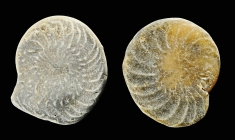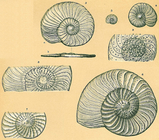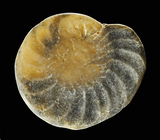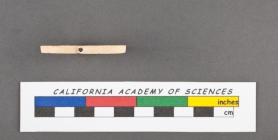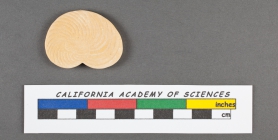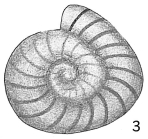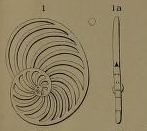| Intro | | Search taxa | | Taxon tree | | Sources | | Match taxa | | Statistics | | Editors | | Log in |
WoRMS taxon detailsOperculina d'Orbigny, 1826
206747 (urn:lsid:marinespecies.org:taxname:206747)
accepted
Genus
Lenticulites complanata Defrance in Blainville, 1822 accepted as Operculina complanata (Defrance in Blainville, 1822) (type by subsequent designation)
Anastegina Vitális-Zilahy, 1966 · unaccepted (Subjective junior synonym in...)
Subjective junior synonym in opinion of Loeblich & Tappan, 1987
marine,
Orbigny, A. D. d'. (1826). Tableau méthodique de la classe des Céphalopodes. <em>Annales des Sciences Naturelles.</em> vol. 7: 96-169, 245-314., available online at http://biodiversitylibrary.org/page/5753959
page(s): p. 281 [details]
Hayward, B.W.; Le Coze, F.; Vachard, D.; Gross, O. (2025). World Foraminifera Database. Operculina d'Orbigny, 1826. Accessed through: World Register of Marine Species at: https://www.marinespecies.org/aphia.php?p=taxdetails&id=206747 on 2025-05-14
Date action by
Nomenclatureoriginal description
Orbigny, A. D. d'. (1826). Tableau méthodique de la classe des Céphalopodes. <em>Annales des Sciences Naturelles.</em> vol. 7: 96-169, 245-314., available online at http://biodiversitylibrary.org/page/5753959 page(s): p. 281 [details] original description (of Anastegina Vitális-Zilahy, 1966) Vitális-Zilahy, L. (1966). The phylogeny of the subfamily Heterostegininae (Foraminifera: Nummulitidae). <em>Acta Zoologica Academiae Scientiarum Hungaricae.</em> 12(1-2): 211-234. page(s): p. 226 [details] Available for editors basis of record Fishelson, L. (1971). Ecology and distribution of the benthic fauna in the shallow waters of the Red Sea. <em>Marine Biology.</em> 10(2): 113-133., available online at https://doi.org/10.1007/BF00354828 [details] Otheradditional source
Rees, T. (compiler) . (2025). The Interim Register of Marine and Nonmarine Genera. Available from https://www.irmng.org at VLIZ. Accessed YYYY-MM-DD., available online at https://www.irmng.org [details]
additional source Loeblich, A. R.; Tappan, H. (1987). Foraminiferal Genera and their Classification. Van Nostrand Reinhold Company, New York. 970pp., available online at https://books.google.pt/books?id=n_BqCQAAQBAJ [details] Available for editors  Present Present  Inaccurate Inaccurate  Introduced: alien Introduced: alien  Containing type locality Containing type locality
From editor or global species database
Diagnosis Test planispiral and evolute, flattened, of medium to large size, numerous narrow chambers in many rapidly expanding whorls, sutures strongly curved back at the periphery, septal flap moderately to strongly folded laterally, the folds alternating in position with the septal stolons, marginal cord with numerous superposed marginal canals, intraseptal canal system with symmetrical lateral canals and sutural canals that are strongly curved forward on the lateral wall to open in the zone of interseptal pillars, proximal row of sutural canals vertical, forked, or branching and distal row branching and inclined in the direction of growth, leading from the lateral intraseptal canal in the fold of the septal flap obliquely across the perforate lateral wall and opening into the median zone of the chamber surface between the pores and interseptal pillars, multiple secondarily formed simple supplementary stolons are radial, arranged regularly in the median plane and alternating with the folds of the septal flap; wall calcareous, lamellar, finely perforate, surface may be smooth or pustulose, with numerous septal and cameral pustules; interseptal foramen formed by resorption at the base of the septal face. Oligocene to Holocene; cosmopolitan subtropical. (Loeblich & Tappan, 1987, Foraminiferal Genera and Their Classification) [details]
|
